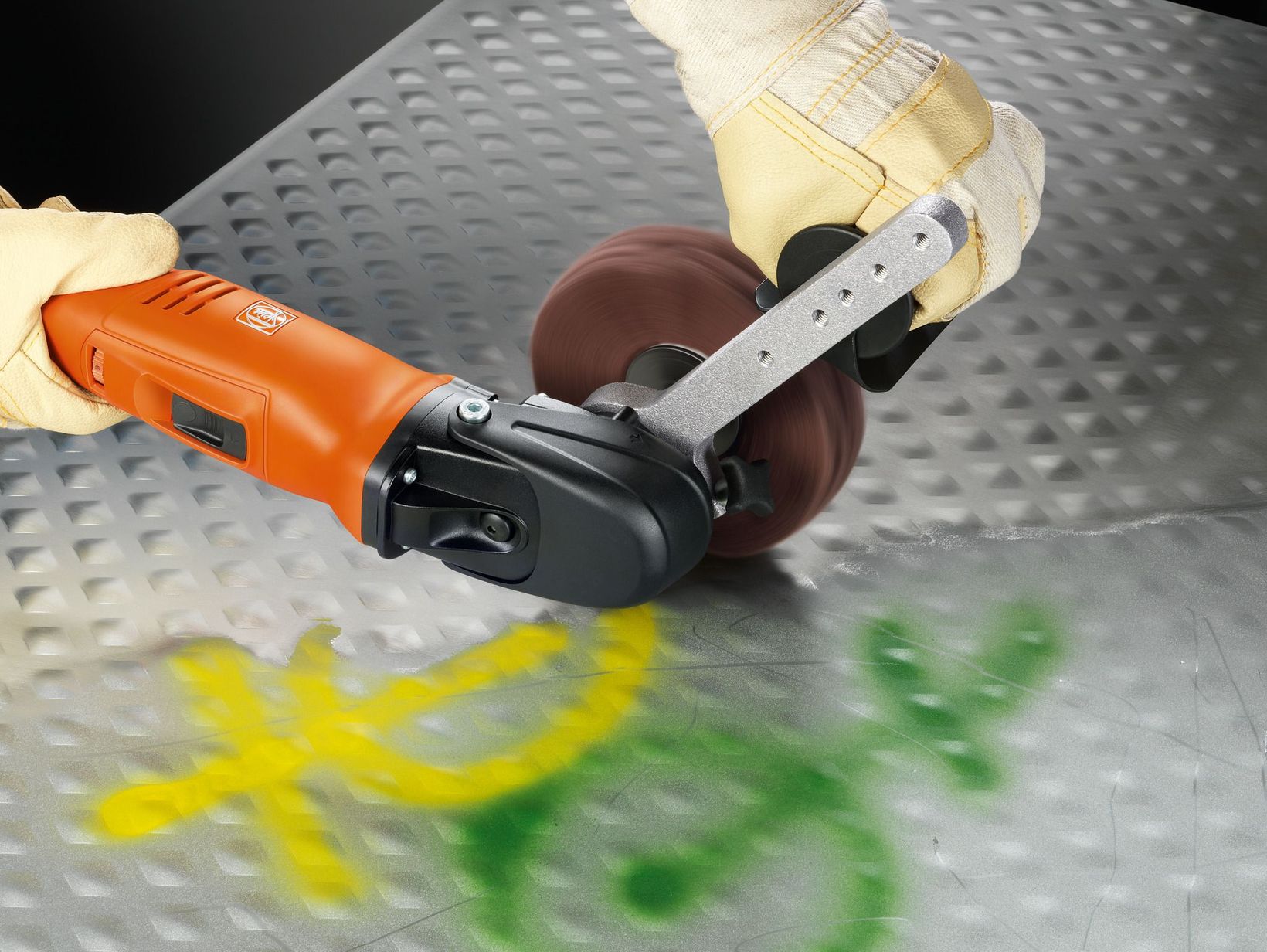This can be done very efficiently and cost-effectively using a grinding polisher with a corrugated fleece. The flexible fleece tool lies optimally on the surface structure. Power tool manufacturer FEIN recommends using tools with a diameter of 150 millimetres, or a diameter up to 200 millimetres for greater immersion depths in embossed plates or bulb plates, for example.
Dirt can be mechanically removed in a single step. The cleaning process results in a slightly satin-finished grinding pattern. For smooth surfaces, we would recommend using fleece grinding discs. You should choose the grit size depending on the level of dirt. To clean very large surfaces cost-effectively, you can work with an optimum speed of 4,200 rpm. Because stainless steel plates heat up easily during machining, you should leave the surface to cool after each step.
Corrosion isn’t just caused by environmental influences or dirt; tarnishing can also damage stainless steel surfaces. Tarnishing appears on metals when they are hot, if you're undertaking welding work, for example. It must be removed immediately, otherwise the protective passive coating cannot form. It can also be removed with a grinding polisher and a corrugated fleece (at a speed of approximately 1,200 rpm). The corrugated fleece adapts flexibly to the surface and also enables you to work in corners or on edges. Adjacent surfaces can be protected using a strip of aluminium or stainless steel film.

The corrugated fleece lies optimally on the surface structure (recommended speed 1,200 rpm).
